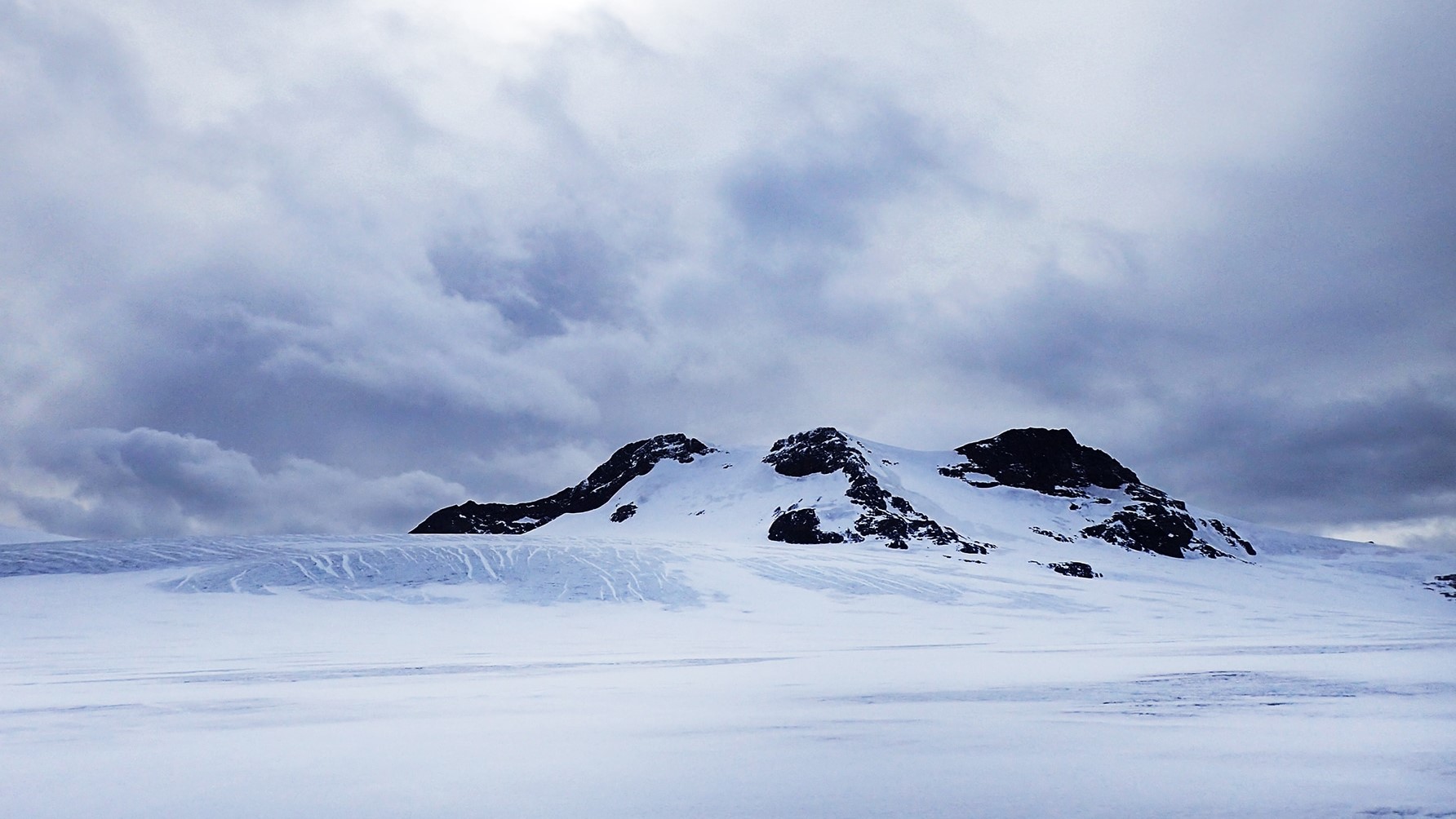Home>Science>Is Antarctica Really A Desert? The Shocking Truth Revealed!


Science
Is Antarctica Really A Desert? The Shocking Truth Revealed!
Published: February 18, 2024
Discover the shocking truth about Antarctica's desert status in this science exploration. Uncover the surprising facts and myths about this icy continent.
(Many of the links in this article redirect to a specific reviewed product. Your purchase of these products through affiliate links helps to generate commission for Noodls.com, at no extra cost. Learn more)
Table of Contents
Introduction
Antarctica, the southernmost continent on Earth, is often associated with icy landscapes, towering glaciers, and a harsh, unforgiving environment. However, amidst the popular imagery of snow and ice, a lesser-known fact emerges – Antarctica is classified as a desert. This revelation may come as a surprise to many, as the traditional image of a desert typically evokes thoughts of scorching heat, vast sand dunes, and minimal precipitation. Yet, the designation of Antarctica as a desert challenges these preconceived notions and prompts a deeper exploration into the unique characteristics of this remarkable continent.
The concept of Antarctica as a desert may initially seem contradictory, given the common perception of deserts as arid, hot, and sandy landscapes. However, the classification of a desert is not solely based on temperature or the presence of sand. Instead, it encompasses a broader set of criteria that extend beyond traditional stereotypes. By delving into the definition of a desert and examining the climate, precipitation patterns, and vegetation of Antarctica, we can unravel the surprising truth behind this seemingly paradoxical classification. Let's embark on a fascinating journey to uncover the hidden facets of Antarctica and gain a deeper understanding of its enigmatic status as a desert.
Definition of a Desert
Deserts are commonly associated with scorching temperatures, vast expanses of sand, and minimal vegetation. However, the classification of a desert extends beyond these stereotypical images. In scientific terms, a desert is defined by its low precipitation levels, rather than its temperature or the presence of sand. This key criterion sets deserts apart from other ecosystems, as they are characterized by an arid climate with limited annual rainfall.
The threshold for defining a region as a desert typically involves an annual precipitation level of less than 250 millimeters (10 inches). This minimal amount of rainfall results in a scarcity of water, creating an environment where water is a precious and limited resource. Consequently, deserts often exhibit unique adaptations in flora and fauna to thrive in such challenging conditions.
Furthermore, deserts are not confined to hot, sandy landscapes. They can manifest in diverse forms, including cold deserts, coastal deserts, and semi-arid deserts. Cold deserts, such as the Antarctic Desert, experience extremely low temperatures and are characterized by frozen terrain, while coastal deserts are influenced by proximity to oceans and exhibit distinct climatic patterns.
In essence, the classification of a desert hinges on the scarcity of precipitation, which profoundly shapes the ecological dynamics and physical characteristics of these environments. By understanding the nuanced definition of a desert, we can appreciate the diverse manifestations of these ecosystems and gain insight into the surprising designation of Antarctica as a desert.
Climate of Antarctica
The climate of Antarctica is characterized by extreme cold, relentless winds, and a stark absence of liquid water. As the coldest and windiest continent on Earth, Antarctica's climatic conditions are shaped by its geographical isolation and its position within the Antarctic Circle. The continent experiences a polar climate, with temperatures plunging to astonishing lows and exhibiting remarkable seasonal variations.
During the austral summer, which spans from December to February, the coastal regions of Antarctica witness relatively milder temperatures, with the mercury hovering around -2°C to 8°C (28°F to 46°F). However, as winter descends upon the continent, the temperatures plummet drastically, reaching bone-chilling lows of -80°C (-112°F) in some interior areas. These frigid temperatures establish Antarctica as the coldest place on Earth, with the lowest temperature ever recorded at -89.2°C (-128.6°F) at the Soviet Union's Vostok Station in 1983.
In addition to the extreme cold, Antarctica is renowned for its fierce winds, which can reach staggering speeds of over 200 miles per hour (320 kilometers per hour) during intense storms. These powerful winds, known as katabatic winds, are generated by the force of gravity as cold, dense air descends from the elevated interior of the continent towards the coast. The relentless nature of these winds further amplifies the harshness of the Antarctic climate, contributing to the formidable challenges faced by any form of life in this unforgiving environment.
Moreover, the prolonged periods of darkness and daylight, resulting from the tilt of the Earth's axis, exert a profound influence on the climate of Antarctica. During the austral winter, the continent is shrouded in darkness for several months, with the sun disappearing below the horizon. Conversely, the austral summer brings extended daylight, with the phenomenon of the midnight sun observed in some regions, where the sun remains visible for 24 hours a day.
The unique interplay of these climatic elements – extreme cold, relentless winds, and dramatic variations in daylight – defines the unparalleled climate of Antarctica. This distinctive environment, characterized by its polar extremes, forms the foundation for the surprising classification of Antarctica as a desert, challenging conventional perceptions of deserts and expanding our understanding of the diverse manifestations of these enigmatic ecosystems.
Precipitation in Antarctica
Antarctica, despite its icy reputation, experiences remarkably low levels of precipitation, a defining characteristic of deserts. The continent's annual precipitation is astoundingly meager, with most regions receiving less than 200 millimeters (8 inches) of snowfall equivalent. In fact, vast expanses of the interior receive as little as 50 millimeters (2 inches) of precipitation annually, placing Antarctica among the driest places on Earth.
The predominant form of precipitation in Antarctica is snow, which accumulates over time to form the continent's expansive ice sheets and glaciers. This accumulation occurs through a process known as deposition, where water vapor directly transitions into solid ice crystals without passing through the liquid phase. The unique climatic conditions of Antarctica, characterized by extreme cold and low humidity, facilitate this process, resulting in the gradual buildup of snow and ice across the continent.
The distribution of precipitation in Antarctica exhibits notable spatial variations, with coastal regions receiving slightly higher levels of snowfall compared to the arid interior. The coastal areas, influenced by proximity to the Southern Ocean, experience enhanced moisture availability, leading to increased snowfall. Conversely, the interior regions, shielded by the formidable Transantarctic Mountains, are subjected to pronounced precipitation shadowing, further diminishing the already scarce levels of snowfall.
Furthermore, Antarctica's precipitation patterns are intricately linked to the continent's unique topography and the dynamics of the polar climate. The orographic effect, where moisture-laden air is forced to ascend over elevated terrain, contributes to localized variations in snowfall, with higher accumulations observed on the windward sides of mountain ranges. Conversely, the leeward sides experience reduced precipitation, accentuating the aridity of the interior regions.
The minimal precipitation levels in Antarctica profoundly shape the physical landscape and ecological dynamics of the continent. The gradual accumulation of snow and ice over millennia has given rise to the vast ice sheets that blanket the continent, defining its iconic glacial terrain. Moreover, the scarcity of liquid water restricts the establishment of traditional terrestrial ecosystems, leading to the dominance of specialized cold-adapted organisms, such as lichens and algae, in the limited areas where life can thrive.
In essence, the astonishingly low levels of precipitation in Antarctica, predominantly in the form of snow, underscore the desert-like nature of the continent. This remarkable facet of Antarctica's climate, characterized by its aridity and minimal snowfall, challenges conventional perceptions of deserts and enriches our understanding of the diverse manifestations of these enigmatic ecosystems.
Vegetation in Antarctica
Antarctica, often envisioned as a barren expanse of ice and snow, harbors a surprising array of resilient plant life that defies the conventional expectations of a desert environment. While the continent's extreme cold, arid conditions, and limited precipitation pose formidable challenges for plant colonization, specialized organisms have adapted to thrive in this harsh polar landscape.
The vegetation in Antarctica primarily comprises cryptogams, a diverse group of non-vascular plants that includes mosses, liverworts, and lichens. These hardy organisms have evolved unique adaptations to endure the relentless cold and scarcity of liquid water, allowing them to carve out niches in the limited areas where conditions are conducive to growth. Mosses, with their low-lying, tufted growth forms, can be found in sheltered regions where snow accumulates, providing insulation against the frigid temperatures and desiccating winds. Similarly, liverworts, characterized by their flattened, leaf-like structures, thrive in moist habitats, such as meltwater streams and areas with higher snow accumulation, where they can access the vital moisture necessary for survival. Lichens, a symbiotic association between fungi and algae or cyanobacteria, exhibit remarkable adaptability, colonizing diverse substrates, including rocks, soil, and even the surfaces of other plants, to harness the scant resources available in the Antarctic environment.
These resilient cryptogams play a crucial role in the Antarctic ecosystem, serving as primary producers and contributing to soil formation and stability. Their presence facilitates the retention of moisture, moderates soil temperatures, and initiates the gradual process of soil development, laying the groundwork for potential future plant colonization. Additionally, these pioneering plants provide essential habitats and food sources for invertebrates, such as springtails and mites, which form integral components of the Antarctic food web.
Despite the remarkable adaptations of cryptogams, the vegetation in Antarctica remains confined to localized pockets, primarily along the Antarctic Peninsula and the subantarctic islands, where milder temperatures and enhanced moisture availability support more extensive plant communities. The interior regions, characterized by extreme aridity and relentless cold, present formidable barriers to widespread plant colonization, underscoring the formidable challenges imposed by the continent's desert-like conditions.
In essence, the vegetation in Antarctica, predominantly comprising cryptogams, embodies the remarkable resilience and adaptability of life in the face of extreme environmental constraints. These specialized plants, thriving in the frigid embrace of the Antarctic desert, enrich the continent's ecological tapestry and offer profound insights into the tenacity of life in one of the harshest environments on Earth.
Conclusion
In conclusion, the enigmatic designation of Antarctica as a desert unveils a captivating paradox, challenging conventional perceptions of deserts and expanding our understanding of these remarkable ecosystems. The classification of a desert, rooted in minimal precipitation levels rather than temperature or the presence of sand, provides a nuanced lens through which to comprehend the diverse manifestations of arid environments. Antarctica, with its extreme cold, arid conditions, and astonishingly low levels of precipitation, aligns with the fundamental criteria of a desert, despite its icy facade.
The climate of Antarctica, characterized by polar extremes, relentless winds, and dramatic variations in daylight, sets the stage for the continent's desert-like conditions. The frigid temperatures, plummeting to unprecedented lows, and the formidable katabatic winds contribute to the harshness of the Antarctic environment, shaping its desert identity. Moreover, the scarcity of liquid water, coupled with the minimal precipitation levels, underscores the arid nature of Antarctica, further solidifying its classification as a desert.
The astonishingly low levels of precipitation in Antarctica, predominantly in the form of snow, define the continent's desert-like character, shaping its physical landscape and ecological dynamics. The gradual accumulation of snow and ice over millennia has given rise to the expansive ice sheets and glaciers that blanket the continent, emblematic of its desert terrain. Furthermore, the limited precipitation profoundly influences the distribution of vegetation, with specialized cryptogams carving out niches in localized pockets, defying the conventional expectations of a barren polar desert.
The resilience and adaptability of the vegetation in Antarctica, predominantly comprising mosses, liverworts, and lichens, offer profound insights into the tenacity of life in one of the harshest environments on Earth. These pioneering plants, thriving in the frigid embrace of the Antarctic desert, play integral roles in the continent's ecosystem, contributing to soil formation, stability, and serving as essential habitats for invertebrates.
In essence, the revelation of Antarctica as a desert transcends the traditional imagery of deserts, inviting us to explore the diverse facets of arid environments and the remarkable adaptations of life within them. By unraveling the surprising truth behind Antarctica's desert classification, we gain a deeper appreciation for the complexities of our planet's ecosystems and the extraordinary resilience of life in the face of extreme environmental constraints.














